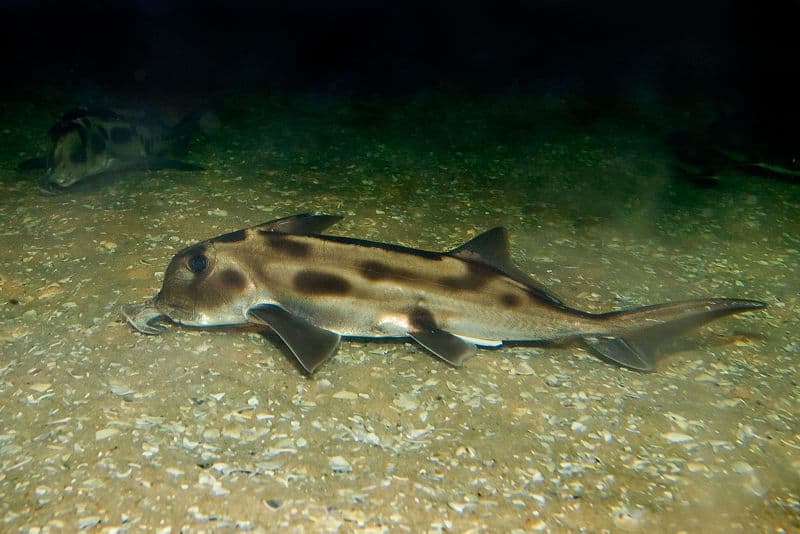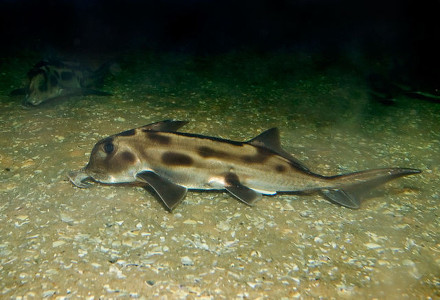
Photo Credit: Fir0002
CC License: http://bit.ly/2vb4YzT
Australian Ghost Shark Facts
- Firstly, Australian Ghost Shark is one of the common names of the Callorhinchus milii. Other popular names for this ocean creature also include elephant shark and elephant fish.
- Despite the name, the rather bizarre-looking creature is not actually a shark. In fact, it is a species of Chimera and as such, it forms a distant cousin of sharks and rays.
- Yet another fascinating fact is that the Callorhinchus milii represents a true living fossil. Evidence indicates that the remarkable species has changed very little in more than 400 million years.
- Finally, it often gets caught commercially. However, despite this unfortunate practice, its population appears to be stable. Therefore, the IUCN currently lists it as a species of Least Concern.
Related Articles
Fiddler Ray Porcupine Ray Cownose Ray
Photographer: Alpha
CC License: https://bit.ly/373Alj5
Australian Ghost Shark Physical Description
Sometimes called the elephant fish, the incredible Australian Ghost Shark does not grow to a large size. Because of this, it only attains a maximum known size of about 49 in (125 cm) in length.
But, it has one most easily recognizable physical feature. This is the club-shaped projection on the end of the snout. This, the individual uses to search the sandy ocean bottom for prey.
Also, in color, most typically present a silvery white, with dark spots occurring at random locations. In addition, the body generally appears smooth, and without denticles.
- Kingdom: Animalia
- Phylum: Chordata
- Class: Chondrichthyes
- Order: Chimaeriformes
- Family: Callorhinchidae
- Genus: Callorhinchus
- Species: C. milii
Photo Credit: Fir0002
CC License: http://bit.ly/2vb4YzT
Australian Ghost Shark Distribution, Habitat, and Ecology
First of all, the Australian Ghost Shark inhabits a quite restricted habitat range. This includes a portion of the waters off Australia and New Zealand. However, it remains unclear whether this has always been its endemic area. It may have once inhabited a more extensive range.
Currently, it appears to be present only in a few specific areas. These include the southwest Pacific Ocean, on the continental shelf off the coasts of Australia and New Zealand, including Tasmania.
Individuals primarily prefer waters with a depth of at least 656 ft (200 m). However, during mating season the species moves into shallower waters. In addition, some even migrate into coastal bays and estuaries during mating season.
Finally, it evolved as oviparous in nature and feeds primarily on a variety of small mollusks and shellfish. It, in turn, serves as prey for larger fish and sharks.
Species Sharing Its Range
Maui Dolphin Great White Shark Blue Shark
Check out our other articles on Earth’s Geothermal Marvels, African Penguin, Dallol Hydrothermal Field, Monkey Puzzle Tree, Lord Howe Island Stick Insect

